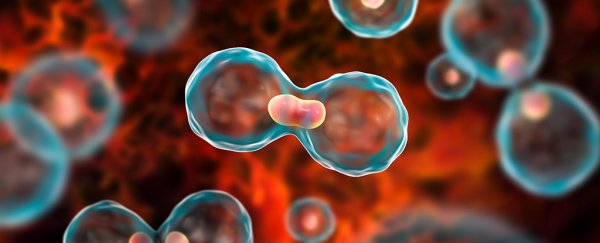Cancer is a type of disease defined by the uncontrolled division of cells at one or more locations in the body.
This abnormal growth can affect a person's health in a variety of ways. It can physically interfere with the functions of organs, replace functional cells, or cause imbalances in nutrients or wastes.
In severe cases, this impact can be fatal. In fact, cancer is the second leading cause of death worldwide, with an estimated 1 in 6 deaths caused by some form of the disease in 2018.
There are thought to be more than 200 different kinds of cancer. Historically, these are divided up into five or six different major categories, distinguished by the type of tissue in which they form.
Carcinomas, for example, start in tissues that line the body on the inside or the outside, such as the skin or the gut.
Lymphomas start in the lymph nodes and glands of the immune system, while sarcomas appear in supportive and connective tissues, like muscle and cartilage.
Bone marrow cells mostly give rise to leukaemia, although a type of white blood cell in the marrow, called a plasma cell, also gives rise to myelomas.
Cells in the brain and nervous system, such as those making up the supportive 'glial' cells, can form a type of cancer called a glioblastoma.
In rare cases, cancers can also be a mixture of these types, and these diseases can further be classified by their primary site, or the location in the body, where they first developed, such as breast cancer.
Recently, however, some researchers have proposed cancers should be categorised based on their genetic profiles rather than their sites of origin, as this could be a more accurate way to classify mutations.
How does cancer form?
Cell growth is managed by a complex array of interactions involving a number of genes. A mutation in one or more of these genes, which can be created spontaneously and passed on through inheritance, raises the risk of any one cell dividing in an uncontrolled manner. Over time, the accumulation of these naturally-occurring mutations can often cause cancer in old age.
Depending on the tasks covered by the dysfunctional genes, this untamed growth of cells can be limited to one area (forming a benign tumour), or invasive (what we call malignant), involving cells moving through the body, avoiding destruction, and settling elsewhere to form secondary tumours.
How is cancer treated?
Cancer treatment involves the killing or physical removal of cancerous cells.
This can, in some cases, involve surgery to cut out the tissue, although oftentimes, the use of radioactive or toxic compounds is also required to more accurately target the cancerous tissue or reduce the size of the tumour before surgery.
Other treatments can include stimulating the immune system to identify and seek out errant cells, or reducing supplies of nutrients or hormones to effectively stunt the growth of the cancerous tissue.
Different cancers are affected by different treatments. As we learn more about unique differences in the cancers that develop in individuals, and continue to map the complex dynamics that guide growth, more treatments will arise that have a better job of removing these rogue cells.
All topic-based articles are determined by fact checkers to be correct and relevant at the time of publishing. Text and images may be altered, removed, or added to as an editorial decision to keep information current.
